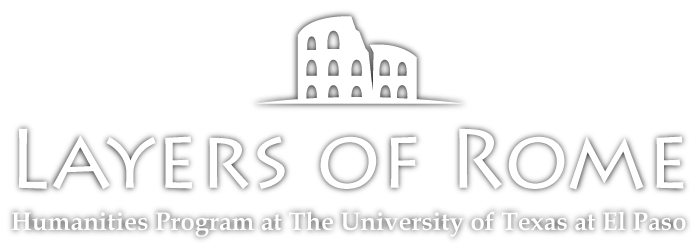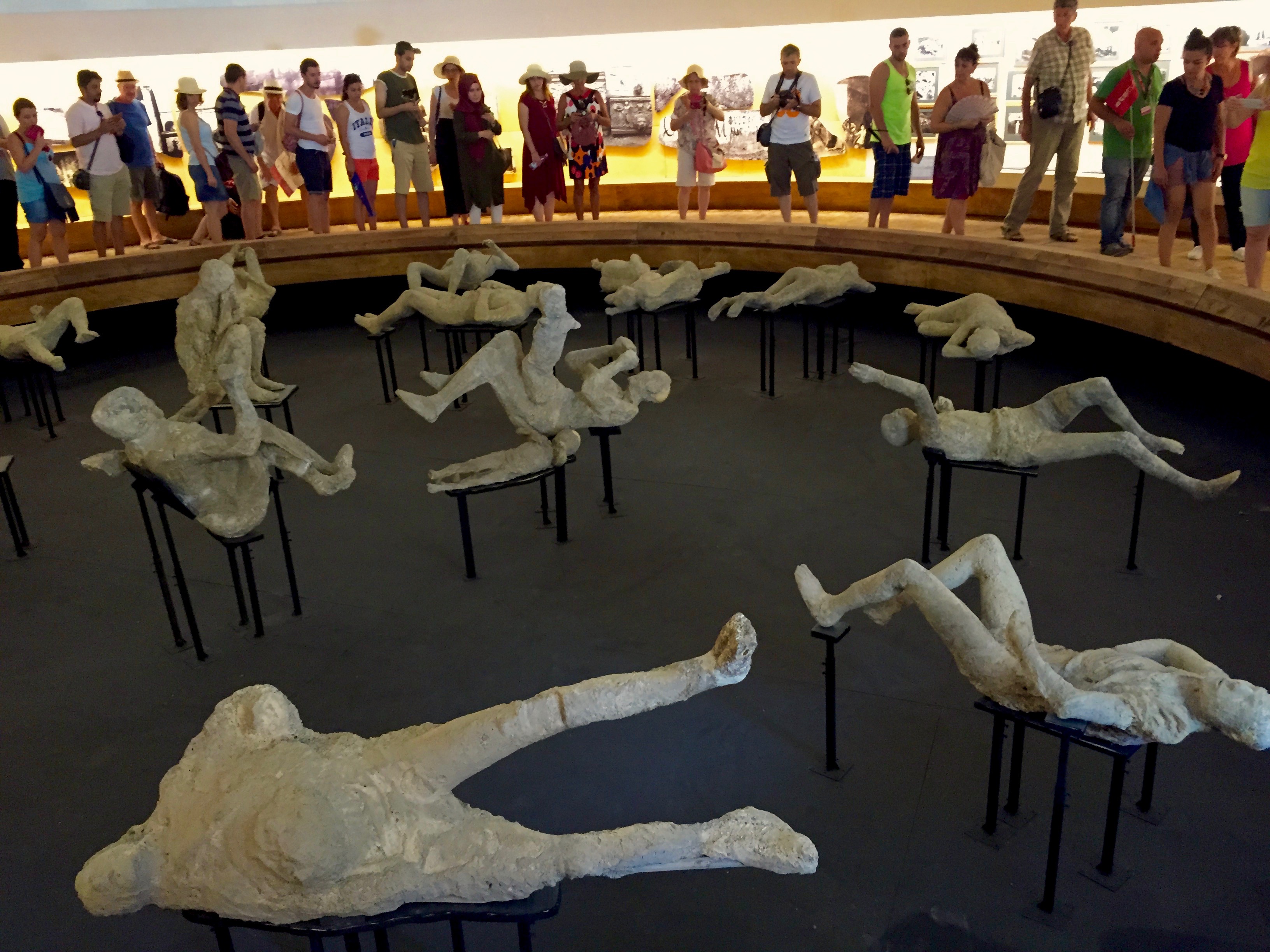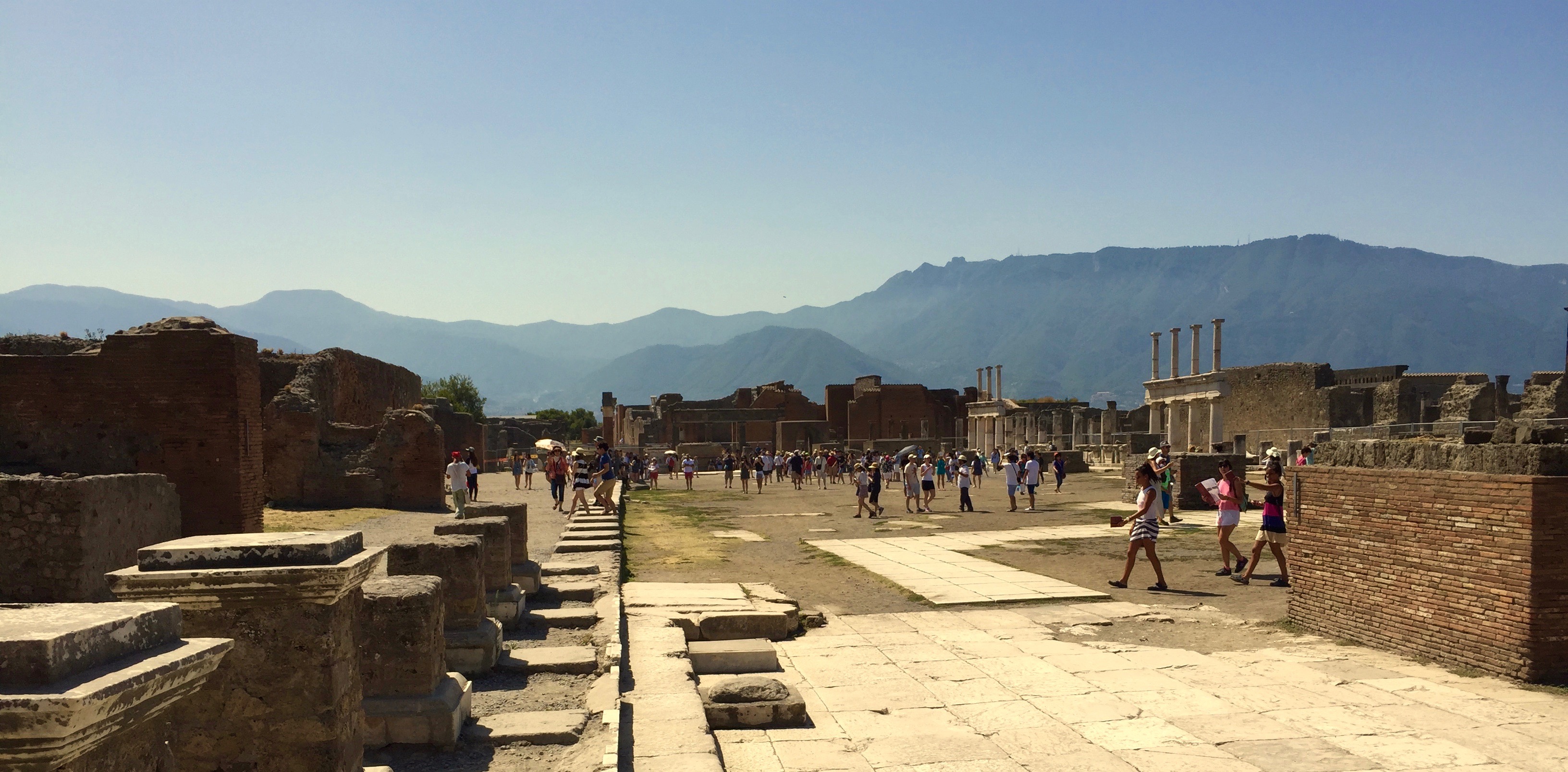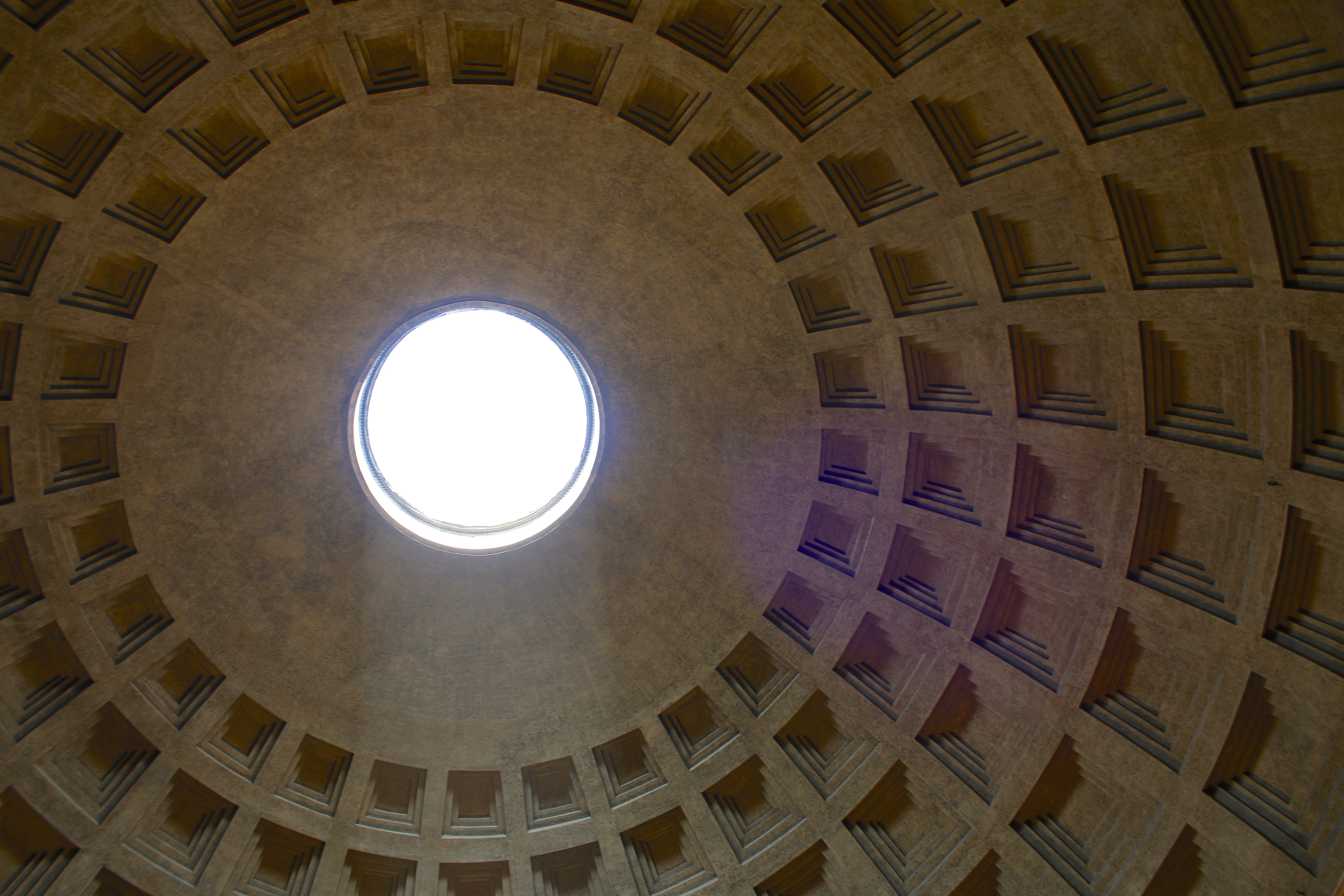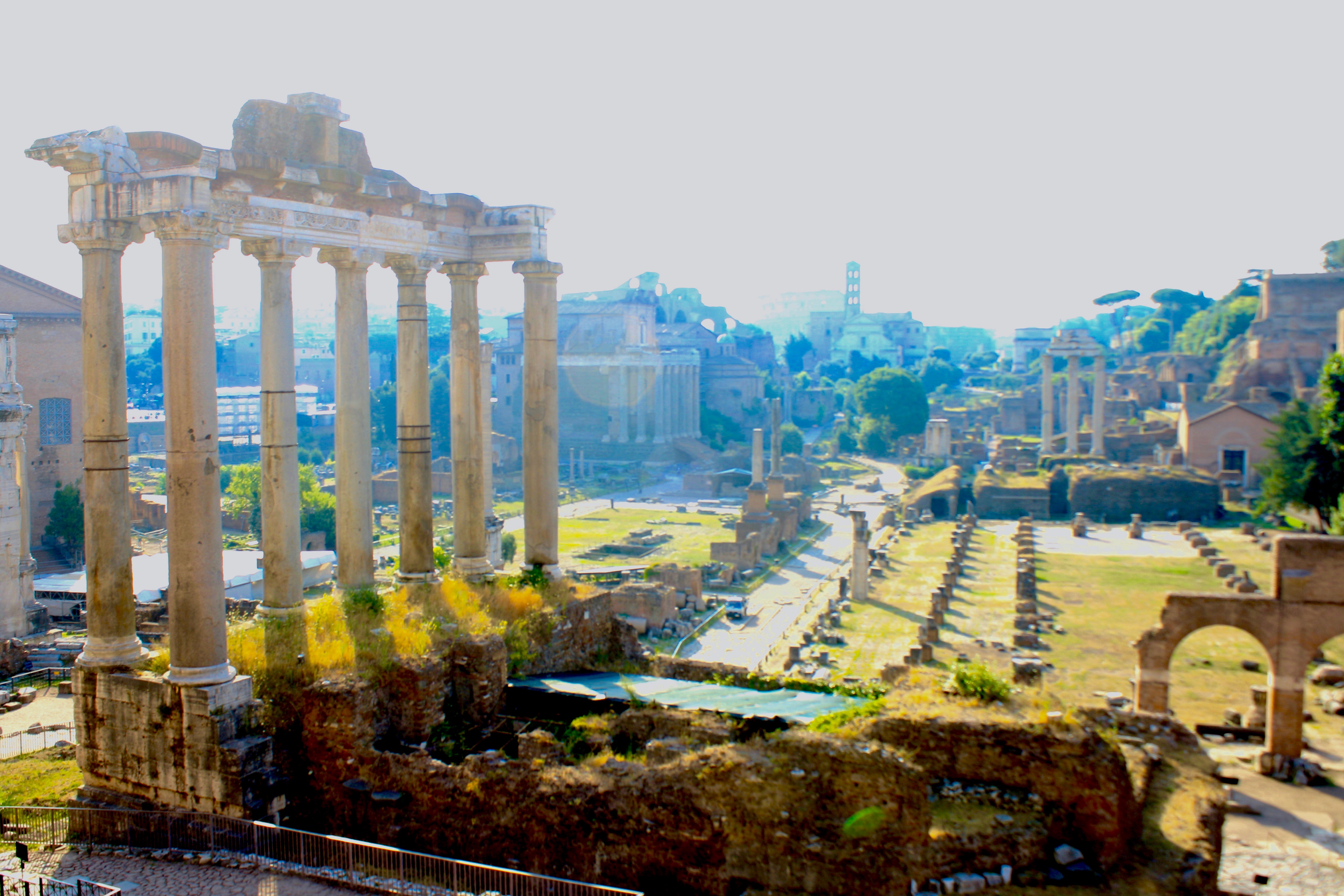Grade Levels: 6-12
Time Required: 6-8 Class Periods (1 hour each)
Author(s): Dennis Rogala, Charles Diaz, Grant Potts, Kristen Van Der Linden, Phillip Harvey
Skills: Primary source analysis and comparison, artwork analysis, word walls, personal evaluation of local monuments, group discussions, and peer teaching.
Through photos and video clips shot on location in Rome, primary sources, pedagogical best-practices, and Common Core standards, we will examine three essential paradigm shifts in Roman history.
In Lesson 1, students will be introduced to the three concepts of Roman place and monuments in evaluating their impact on modern British and American history. They will also be introduced to the three paradigms found in lessons 2, 3, and 4. Finally, they will participate in an example activity utilizing Roman gladiator games.
In Lesson 2, students will discuss the change from Roman Republic to Roman Empire using three Roman monuments and two primary source documents.
In Lesson 3, students will discuss the shift from a Pagan to Christian culture reviewing a timeline and analyzing statues.
In Lesson 4, students will use a dialectic notebook to examine quotes from British authors from various times, identifying British perspectives and writing down their interpretations and reactions to the British quotes.
In Lesson 5, students will read excerpts from Livy and George Washington to compare two primary sources to Cincinnatus. Students will also examine images comparing classical Roman statues of Cincinnatus and Augustus to statues of Washington rendered in classical Roman style. Finally, they will analyze an ode by Byron, with reference to Washington and Napoleon, but only one is compared to Cincinnatus.
Lastly, in Lesson 6, students will be tasked with finding a monument in their community and analyzing it themselves.
Connections between historical and contemporary spaces and times can be difficult for students. These lessons provide a framework for taking the past and linking it to today’s student. The power of place is never more evident than with the Eternal City of Rome. Through our frame of reference, students can see how their high school playing fields were patterned after the Circus Maximus and the Coliseum, our heroes were inspired by Cicero and Cincinnatus, and our villains patterned after Catiline. Along with time, space, and place, students learn to place contemporary cultures in context with Rome.
These lessons examine three paradigm shifts in Roman history:
1) Roman Republic to Roman Empire
2) Pagan Roman culture to Christian culture
3) Ancient Roman world to modern, neoclassical identities based on the Roman models.
These shifts enable us to investigate and connect the classical Roman world to neoclassical Anglo-American identities, concepts critical to understanding the development of western traditions and ideas such as human rights.
These lessons include both the history of Rome, with a particular focus on its monuments, and emphasis on the legacy Rome continues to endure in the modern Western world.
*How much has Rome, as a world intellectual center, contributed to emerging national and global identities of different peoples over time?
1. Students will be able to explain the three Roman history paradigms shifts of Republic to Empire, Pagan to Christian, and Rome to British and American imaginations.
2. Students will be able to identify three key events/figures in the transition from Roman Republic to Roman Empire.
3. Students will be able to analyze the importance of religion in the life of an Ancient Roman.
4. Students will be able to explain why the British reinterpreted Roman history according to changing political events in British history.
5. Students will be able to evaluate primary sources and images and determine which comparisons can be made accurately between historical figures and eras.
Assessment Option 1: Have students analyze their monument in a PowerPoint presentation to be given to the class. Ensure that the students include pictures of their monument and the Roman monument in question nine. Students could be tasked with answering all or a specific number of the above questions.
Assessment Option 2: Have student write a short paper about their monument. Ensure student answer all or a specific number of the above questions.
This unit approach can be applied to any historical time and place. Teachers are encouraged to model this approach with other ancient civilizations with remains that can be examined and analyzed today.
1. CCSS.ELA-LITERACY.RH.6-8.2
Determine the central ideas or information of a primary or secondary source; provide an accurate summary of the source distinct from prior knowledge or opinions.
2. CCSS.ELA-LITERACY.RH.9-10.9
Compare and contrast treatments of the same topic in several primary and secondary sources.
3. CCSS.ELA-LITERACY.RH.11-12.7
Integrate and evaluate multiple sources of information presented in diverse formats and media (e.g., visually, quantitatively, as well as in words) in order to address a question or solve a problem.
Video: The Obelisk of Montecitorio
Video: The Statue of Marcus Aurelius
Video: The State of St. Paul Outside the Wall
Download:
Lesson 1:Rome via Monuments
Lesson 2: Republic to Empire
Lesson 3: Pagan to Christian
Lesson 4: Roman Monuments in British Imagination
Lesson 5: The Written Word as Monument
Lesson 6: Rome and American Identity
Download: Sample Analysis Approach
